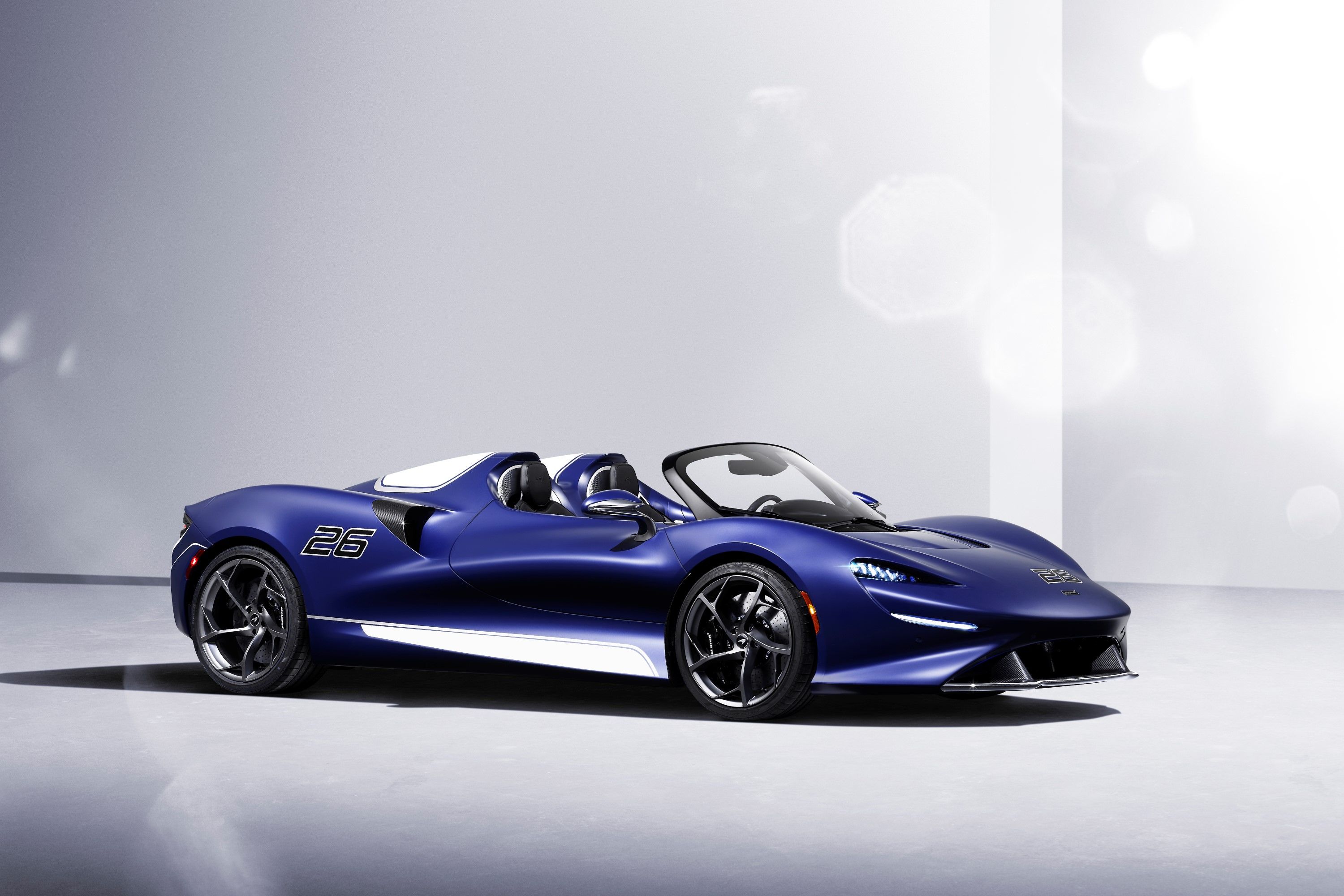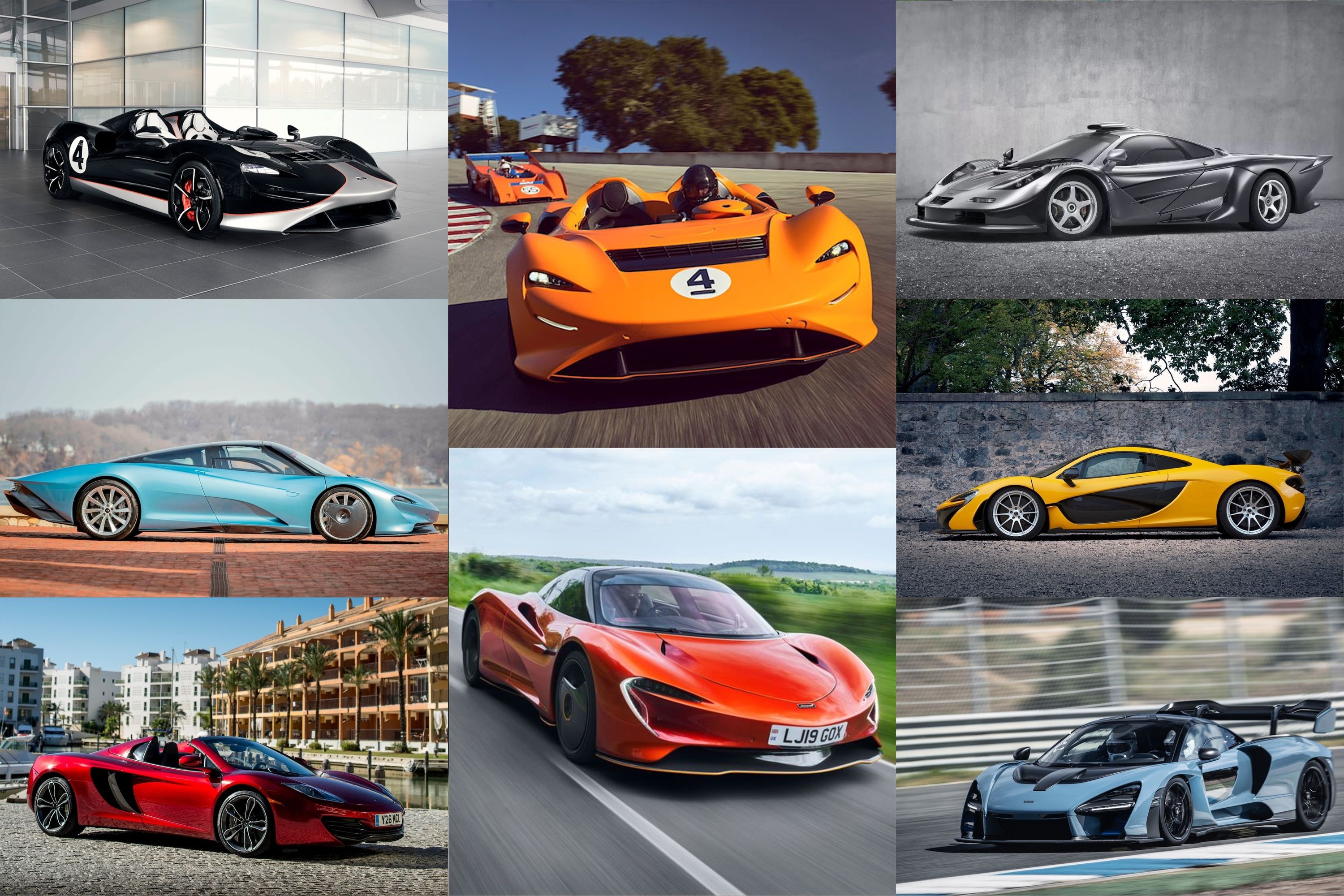
McLaren Automotive was founded as McLaren Cars in 1985 and is part of the McLaren Group, founded by Ron Dennis after he bought the McLaren Formula 1 team in 1981. Under the McLaren Cars name, the first and only car was the McLaren F1, a concept pitched to Dennis by designer Gordon Murray in 1988 on the way home from the Italian F1 Grand Prix. The BMW V12-powered supercar based on Formula 1 technology became an instant car enthusiast's icon. We'll brush past the original F1 in this list, though, as we've already written about it at length. Instead, we're going to concentrate on the actual first McLaren road car that set the scene for the F1 and the cars that came after McLaren returned in 2010 with the MP4-12C.
1. McLaren M6GT
Genesis. Bruce McLaren was born in Auckland, New Zealand, and entered his first car into competition in 1952, aged 14. He became so competitive and good at modifying his F2 car he came second overall in New Zealand's 1957-58 championship. His legacy as a competitive driver, however, is overshadowed by his race team and abilities as an engineer, analyst, and manager. In the 1960s, the M6GT was supposed to become McLaren's first road car, but the project was shelved after Bruce McLaren's death. It was based on the Chevrolet V8-powered M6 Can-Am race car, but only three were built, although customers converted race models to be road legal. McLaren's personal, road-legal M6GT is rumored to be for sale privately somewhere in New Zealand, but we're told the current owner doesn't want it going to a collector who won't truly appreciate it.
2. McLaren MP4-12C
The second coming. Originally called the MP4-12C and later dropping the prefix to become simply the 12C, McLaren's first road car since the F1 was revealed in 2009 and entered production in 2011 as McLaren's first wholly designed and built car. The car is based around a carbon fiber composite chassis and the McLaren M838T engine. Developed in-house, the engine is a flat-plane crank design twin-turbo 3.8-liter V8 that made 592 horsepower at 7,500 rpm. Essentially, it's based on an IndyCar race car engine designed by Tom Walkinshaw Racing but never saw competition.
In independent testing, the 12C has hit 60 mph in 2.8 seconds, but the race car technology didn't end with the engine. It introduced brake steer to road cars, where the inside rear wheel brakes slightly during fast cornering to reduce understeer. The most significant difference compared to other supercars of the time was its computer and valve-controlled hydraulic suspension in place of a typical system using coil springs, dampers, and anti-roll bars. The 12C was designed with a convertible version in mind, and the retractable hardtop Spyder version is shown below.
3. McLaren P1
Hot on the heels of the 12C, McLaren launched the P1, which made up one-third of the Holy Trinity of first-generation hybrid hypercars with the Ferrari LaFerrari and Porsche 918 Spyder. The McLaren P1 is powered by a twin-turbocharged V8 engine from the 12C and an electric motor combining to make 903 hp. Like all McLaren cars, it was designed with the track in mind and featured Formula 1-based technology. In this case, an Instant Power Assist System (IPAS) for an instant boost in acceleration, active aero in the form of a Drag Reduction System (DRS), and a Kinetic Energy Recovery System (KERS) to recover energy from the brake system. McLaren restricted manufacturing to just 375 units, with 128 of them coming to the US.
4. McLaren Senna
Faster lap times were the basis of the 2019 McLaren Senna, and naming it after the legendary Brazilian Formula 1 race driver Ayrton Senna was fitting. With McLaren's dedication to making the Senna as light as possible, it has a power-to-weight ratio of 658 hp per ton. Raw power comes from a modified version of the twin-turbocharged V8 engine used in the Mclaren 720S, making 789 hp. The aero is equally impressive and topped off with an adjustable double-element rear wing that also acts as an air brake, helping the next-generation Brembo carbon-ceramic brakes for the latest possible braking before a corner.
5. McLaren F1 GT
It's a word that gets tossed around a lot, but the McLaren F1 can legitimately be called an icon in the enthusiast world. Of the 106 road versions of the F1, the F1 GT is the final incarnation of the car. To homologate the F1 GTR - which dominated at Le Mans - with the FIA, McLaren only needed to build one 1997 road-legal F1 GT and didn't need to sell it. However, with customers like the Sultan Of Brunei willing to throw their money at the most exclusive cars in the world, McLaren was smart enough to build two more to sell. The 6.0-liter V12 was enlarged to 6.1 liters, added a hood scoop to get more air into the car, and extended the nose and tail for aerodynamics. The new rear end removed the need for a separate wing and made it what's known as a 'longtail.' The larger engine displacement didn't add power but would aid reliability if it entered the 24 Hours of Le Mans.
6. McLaren Speedtail
McLaren calls the Speedtail its "first ever Hyper-GT." It's an insanely aerodynamic and powerful, hence, fast car. The limited production went into production in 2020 with 1,036 hp and 848 lb-ft of torque powertrain. It's a three-seater, which makes it the spiritual successor to the F1, and all three people are under a glass canopy with electrochromic glass that darkens at the push of a button. Fixed wheel covers at the front smooth the air, while the rear end uses flexible carbon fiber ailerons instead of a traditional hydraulic spoiler for adjustable aerodynamics. All 106 examples McLaren slated for production were bought immediately at well over $2 million each. Now, they are worth even more. The car was also not officially legal in the US because of that central seat, and is only usable under the US Show or Display rule.
7. McLaren Elva
The Elva is an oddball car when you consider that it comes from McLaren, a company famed for building extraordinarily focused cars. It's based on the Senna but has no windscreen, roof, or frunk. It's a speedster, which is a style of car that you do not want to be caught out in the rain driving, and unless you wear a mask or scarf over your mouth, you had better only drive if you like the taste of raw insects. Still, the 149 McLaren built come with an upgraded 804 hp version of the Senna's 4.0-liter twin-turbocharged V8 engine and pays homage to the open-topped sports cars Bruce McLaren developed in the 1960s and outsourced to a manufacturer called Elva to produce. There's not much point to the vehicle, but perhaps that's the greatest point you can have with a supercar. What makes the Elva unique among its peers from Ferrari and Aston Martin is that in the US, you can order it with a windscreen to make it road legal.

